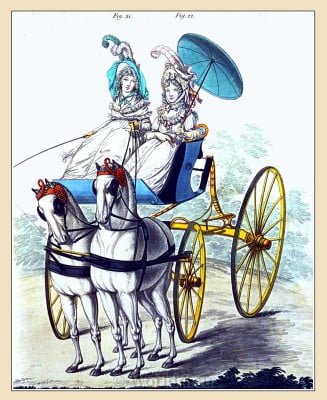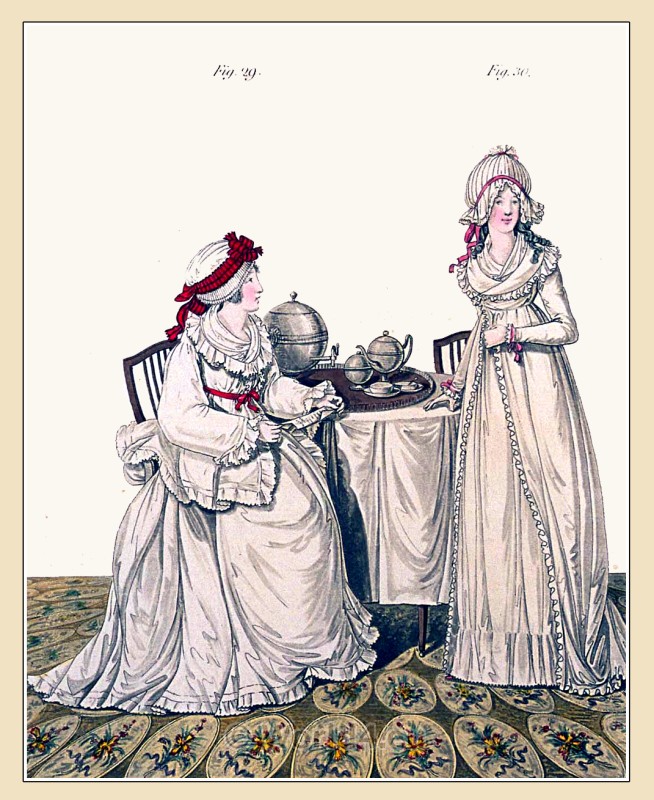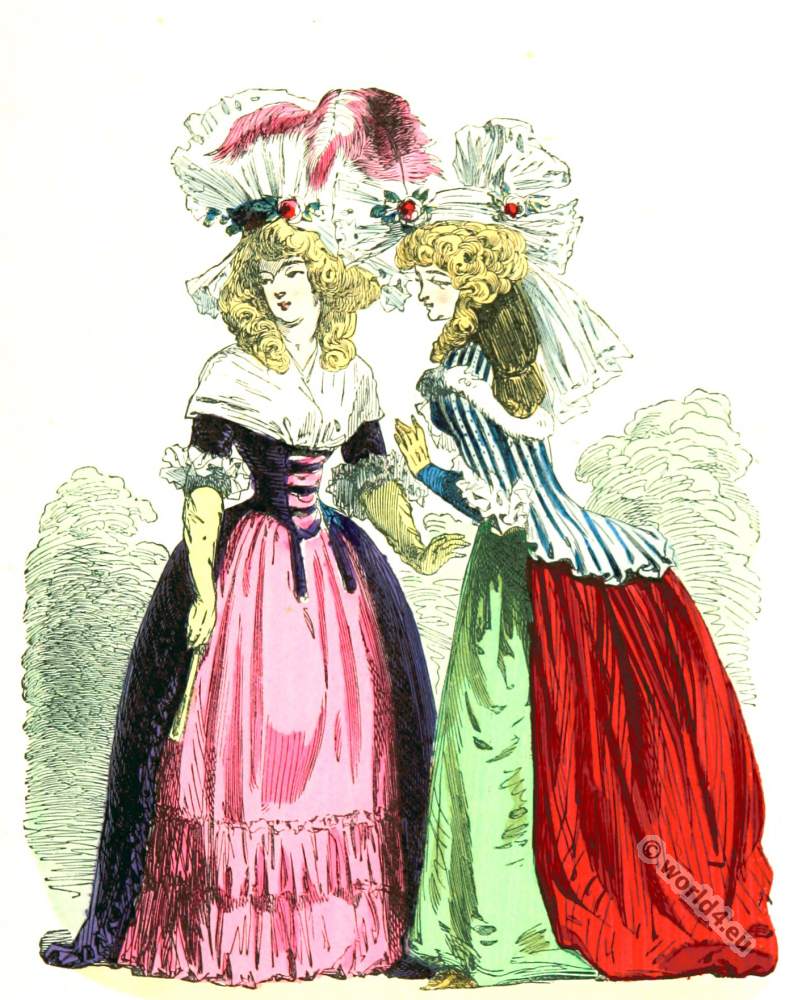The Gallery of Fashion. August 1794.
Two Ladies en Negligé taking an airing in a phaeton.
FIG. XXI
Head-dress: white stamp-paper hat, trlmmed with green riband, and tied down with the same. One green and one yellow feather placed on the left side. Green gauze veil. The hair in small curls; plain chignon. Plain calico morning with long sleeves, the petticoat trimmed with a narrow flounce. Plain lawn handkerchief. Green sash. Lawn cloak, trimmed with lace and tied behind. York tan gloves. Yellow shoes.
Second Lady: FIG. XXII
Head-dress: straw-coloured hat, trimmed with orange and purple ribands, and a white lawn handkerchief, embroidered in lilac, tied down with a white riband. One lilac and white cross-striped large ostrich feather on the left side. The hair in light curls, and hanging down in ringlets behind, bound with a half handkerchief tied intone a large bow in the front.
Chemise of spotted muslin; trimmed with a double plaiting of broad lace round the neck, tied ill the front with a lilac riband; short loose sleeyes, tied in the middle with the same riband. Lilac coloured sash, tied behind. Jonquille·coloured gloves and shoes.
Source: The Gallery of Fashion Vol. 1. April 1794 to March 1795. Published by Nikolaus von Heideloff, London.
Related
Discover more from World4 Costume Culture History
Subscribe to get the latest posts sent to your email.





